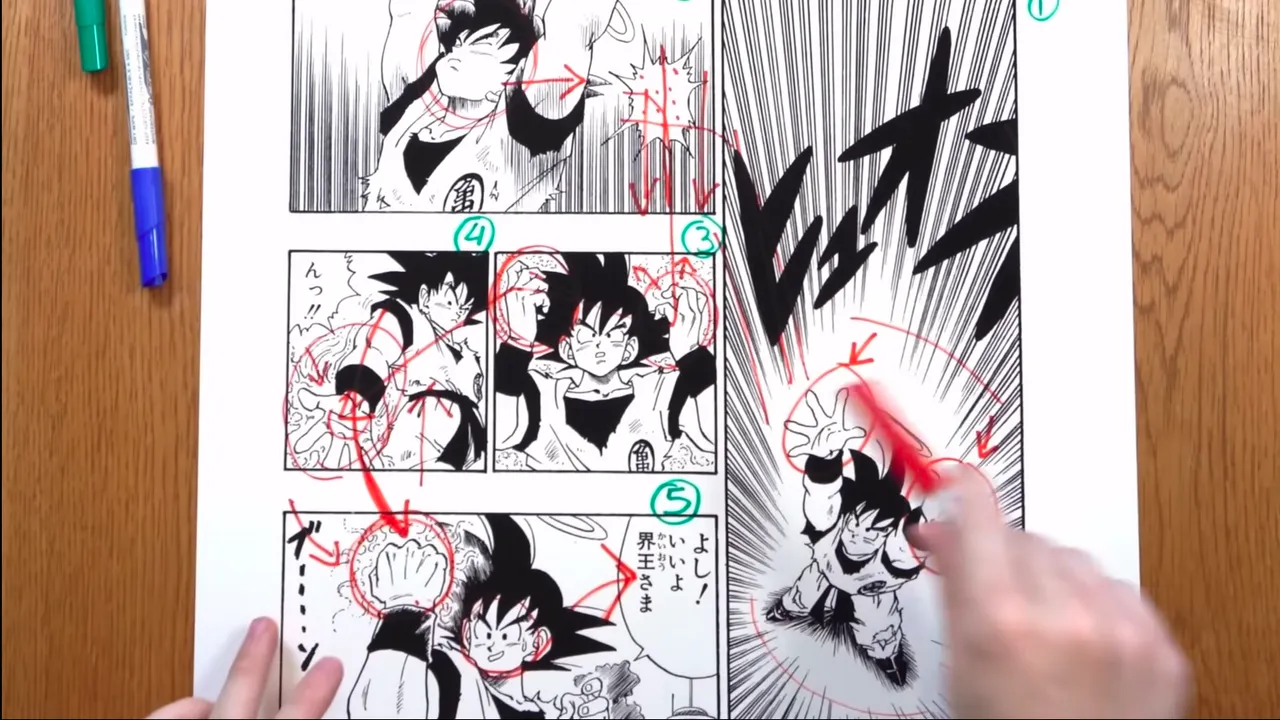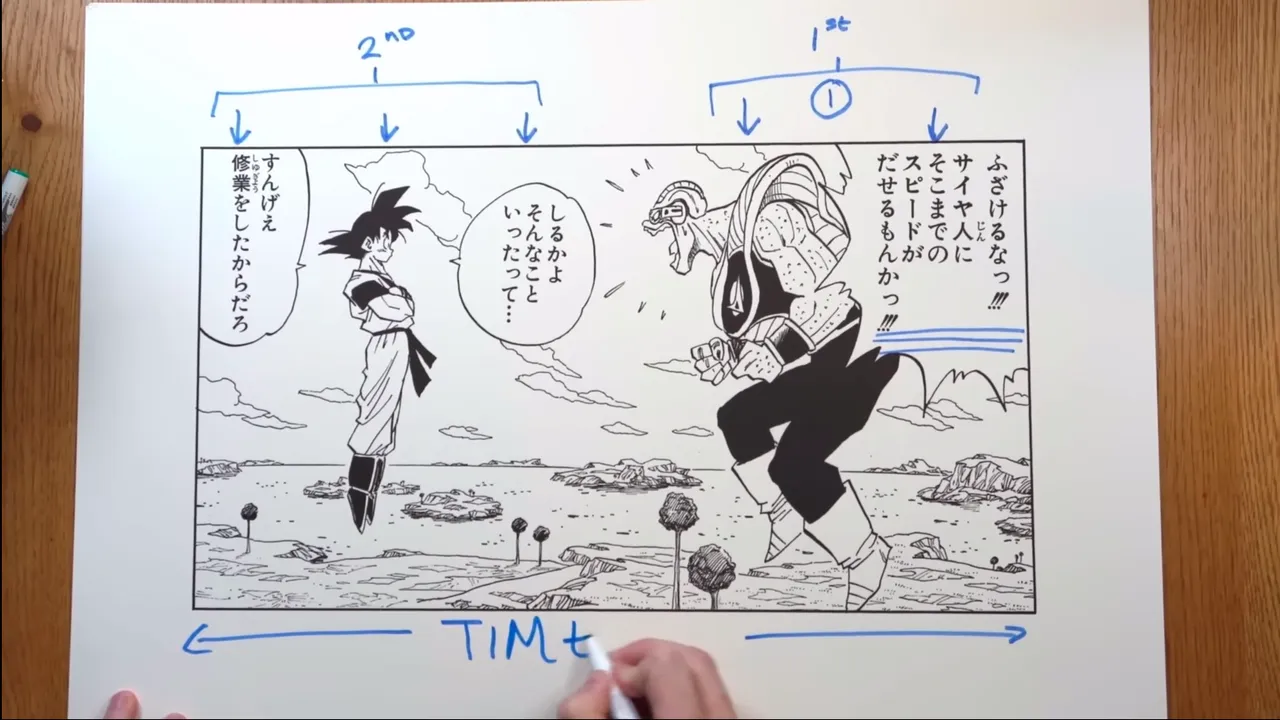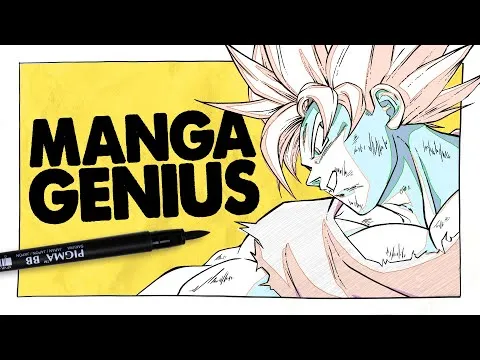Tl;dr: You can learn many things about art & presentation from Dragon Ball, even if you look at one chapter.

This article is an expanded version of my Anime DeepDive post on D.Buzz in which I explained what I learned from this video analyzing comics paneling through the Manga Dragon Ball.
The Video:

Dragon Ball's Genius Paneling
In the video, TotallyNotMark starts by showing a page from Dragon Ball, and claims that even if you only saw the silhouettes, without details or dialogue, you could understand what's happening in the scene, and if you're a DBZ fan, you'll know which scene that was.
He's right on both claims. TotallyNotMark goes on to explain the techniques Akira Toriyama used to make his Manga as clear and engaging as possible!

Clarity
The most important thing in a graphic novel is for it to be clear. Art with an unclear message can make a good story worse. Communicating the story through art is what differentiates Manga from written novels...
Dragon Ball author understands that, and in my opinion, it has one of (if not) the best use of paneling in any manga I read.
[✒️] I'll Deep Dive into the things I learned from this video analyzing Dragon Ball manga. Including Character Design philosophy and precise structure!
[✒️] Akira Toriyama designs characters so uniquely. I realized while watching the video that he rarely places similar-looking characters on the same page as each other.
All characters he created, have unique silhouettes! This observation blew my mind because Namekians look similar but have different silhouettes!
[✒️] The part about how oses inform stability to the reader was very educational! (Watch the video at around 10:00 minutes.)
When I draw my characters, I draw stable, wavering, or unstable gestures in the way that feels right. I do it without thinking and without knowing the science behind it. Watching this video makes me want to be more intentional with it.


Techniques to Present a Sequence
[✒️] Moment to Moment approach to comic paneling. (Watch the video at 16:00+ minutes.)
Moment-to-Moment slow showcase of movement for impact/dramatic effects. Removing one of these panels doesn't change the scene but lessens the impact of it.

[✒️] Action-to-Action approach shows all the steps that happen in the scene. (Watch the video at 17:25+ minutes.)
Removing a panel of these changes the scene because every panel shows a required action that adds to the story. This is my favorite part of the video!

A reader understands the story at a glance, but it blows my mind when I think about how much thought Akira Toriyama put in each panel despite him improvising the actual story on weekly basis.

Passage of Time
[✒️] Finally, let's talk about how Comics do "Time." (Min 31:10+.)
Unlike a frame in a movie, not every event in a comic panel happens at the same time. Time moves, as your eye moves across the page, even in the same panel at a speed that the artist can control!

That's something the author of ONE PIECE has mastered as well. Making panels in a way that when read from Right-to-Left, feels like the time is moving as you read them. The positioning of speech bubbles, the breaks in speeches and panel breaks are carefully chosen for the timing to be as perfect as possible.

What do you think?
As I was writing this post, I started to think. Panels are the super power of the Manga as a medium. It might not have music or flashy animation, but the better the manga uses its panels, the harder for the anime adaptation to be as good.
Most of the greatest manga scenes I can imagine on the top of my head are 100x better than their anime counterparts. Dragon Ball is one example.
That's all I have for today. I hope to meet you in another article.
I'm back to the art world right now, and learning these made me want to draw comics for my stories. If you're interested in reading them, check my "Where to Start?" article. For now, I leave you all with good wishes. Salam. (Peace.)

* Screenshots are taken from the video.
* All other images are made by me using iBisPaint and ClipArtStudio.
* Beneficiary Rewards: 2% of this post's rewards go to @mizuosemla for commenting on the DeepDive. Another 8% is divided on Supporters of my DFT project: @master-lamps @ackza @eturnerx.

